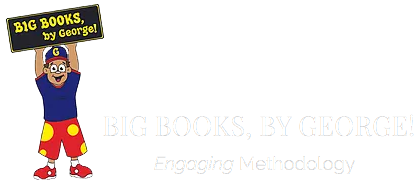Go-To Guide to Craft the Perfect Children’s Book
There’s a universal charm in how children’s stories captivate the heart, no matter the reader’s age. From the infectious giggle of a toddler to the knowing chuckle of an adult, the world of children’s literature offers countless emotions and memories. In the bustling world of storytelling, how does one stand out, especially when the goal is to delight the young and young-at-heart? Dive into our guide on creating that unforgettable children’s book. And who knows? Maybe your book will be loved by so many children!
The Little Big Thinkers
Children are a unique audience. They’re curious, open-minded, and see the world through fresh eyes. But they also have a limited vocabulary and a different perspective on life. Therefore, understanding the age group you’re writing for is vital. Picture books often cater to ages 3-7, early readers might target ages 5-9, and middle-grade books can appeal to kids aged 8-12. Each group has its interests, comprehension level, and maturity, so choose your words, themes, and character developments accordingly.
Remember, even if you’re targeting the youngest readers, simplicity doesn’t equate to dullness. Envision your story as an entry in a big book of children’s stories – it should be engaging, memorable, and tailored to their developmental stage.
Choosing Your Central Theme
Every remarkable book has a central theme, a message or lesson it aims to convey. Think of the classics. Many times, they tackle subjects like friendship, bravery, love, or self-acceptance. Your story doesn’t have to address a profound existential concept. But it should have a clear idea or moral that resonates with its readers, both children and adults.
Moreover, considering the vast ocean of themes in every big book of children’s stories, your approach should be fresh. Maybe it’s a unique perspective or an unconventional setting; find that differentiating factor.
Develop Memorable Characters: Heroes, Villains, and Sidekicks
What’s a story without its cast? Characters are the heart and soul of any narrative. Kids need to relate to, learn from, or even sometimes caution against them. Think of unforgettable characters from your childhood. What made them memorable?
Designing your characters involves more than just giving them a name or a cute appearance. Dive deep into their personalities, quirks, desires, fears, and dreams. And always remember, imperfection often breeds relatability. While children might aspire to be like the heroes in every big book of children’s stories, they often find comfort in characters that show vulnerability and growth.
World-Building for the Little Minds
While certain words are off the table, crafting an engaging setting for your story remains paramount. The background serves as the canvas upon which your narrative paints its tale. Whether it’s a bustling city, a serene village, or an entirely different planet, your setting should be immersive.
However, balance is key. Overwhelming details can confuse young readers, so keep descriptions vivid but concise. Use strong, sensory words that make the world jump off the pages. Each big book of children’s stories succeeds because it teleports its readers into its world, making them a part of the narrative.
Crafting the Plot
Your plot should be like a roller coaster – full of ups, downs, twists, and turns that keep the young reader engaged. But remember, for children, a straight slide can be just as exciting as a loop-de-loop. The key lies in clarity and progression.
Always begin with a solid structure in mind: the introduction, the rising action, the climax, and the resolution. Each event should lead seamlessly into the next. This fluidity ensures that even when featured in a big book of children’s stories, your tale will stand out for its coherence and charm.
Illustrations
Imagine a children’s story without illustrations. It’s like a song without a melody. The right images breathe life into your narrative. They accentuate the mood, showcase the setting, and bring characters to life.
If you’re not an illustrator, collaborate with one who understands your vision. Discuss key scenes, character appearances, and color palettes. After all, every big book of children’s stories is as much a visual treat as it is a literary one.
Conclusion
Writing a children’s book is an intricate dance of creativity, understanding, and simplicity. It requires the heart of a child and the discipline of an adult. As you embark on this endeavor, remember that each page you craft has the potential to shape young minds, impart values, and kindle imagination. For more details visit us at https://www.bbbg.org/.
In a world overflowing with stories, your narrative, with its unique voice and heart, has every potential to be featured in the next big book of children’s stories. So, embrace the process, enjoy the journey, and create stories that generations will cherish. Happy writing!
Read More:
English Language Learners and the Search for Knowledge
Reading Aloud to Create a Language Rich Environment
Teacher questioning and the emergent bilingual response connection
